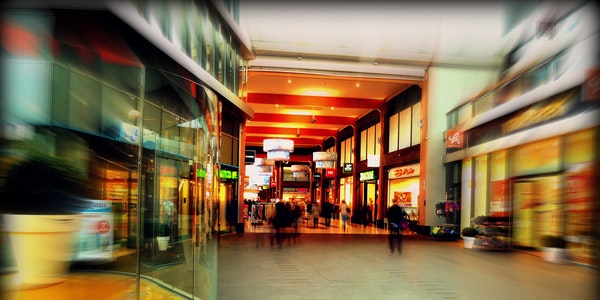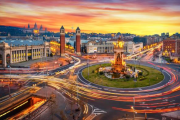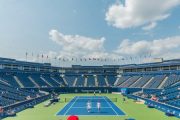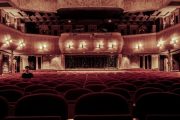Shopping Mall Facade Lighting
Each commercial building has its general commerciality and its own characteristics. In addition to how to show its generality and characteristics more artistically, the facade lighting of various shopping malls should be consciously brighter and more artistic, so that passers-by have a deep impression of the shopping mall. .
In addition, it is necessary to have advertising lighting that renders the store image, so that people can see the beauty of the store, but more importantly, it is associated with the comfort of the store’s shopping environment, the abundance of goods, and the thoughtful reception. When people see the store, they think of walking inside and enjoying it.
Advertising Lighting
- Shopping mall advertising lighting
The above-mentioned shopping mall facade lighting is the most effective advertising for shopping malls, but each shopping mall also has its name and logo. For names and signs, the following methods are often used:
(1) Use neon lights to circle the name or logo stroke by stroke. The neon lights are long bright, or multi-color alternate flashing or rolling carpet flashing, so that people can see it from far, far away.
(2) The name or logo of the shopping mall is a physical art sculpture, with a bracket away from the wall, and behind it, lights are arranged in accordance with its shape, so that the name or logo can emerge from the lights. Use bright neon lights.
- Commodity advertising lighting
(1) Use neon lights to create product names, shapes, and trademarks. Or it is hooked, or made along the shape of the advertisement, the lights are always bright, or flashing. The bottom of some advertisements is also complemented by flashing neon lights in the form of a rolling carpet.
(2) Transparent posters and pictures. Make a light box, illuminate with a column of light pipes behind the painting or picture, so that the color of the picture can be transmitted.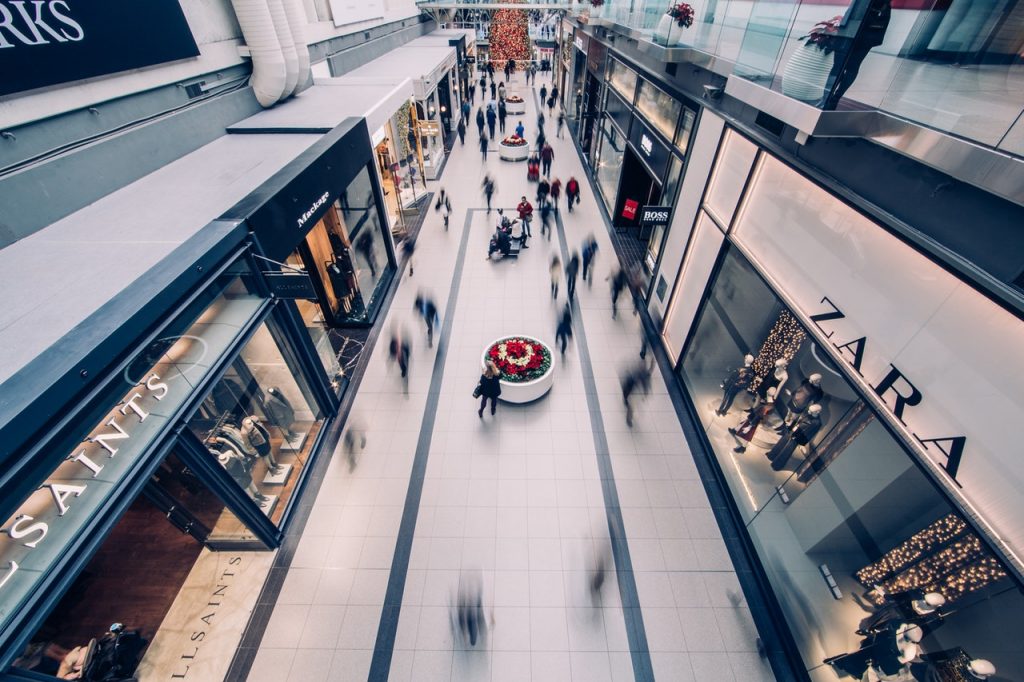
(3) The opaque advertising screen is illuminated with a floodlight to show the color and level of the screen.
(2) and (3) use high color rendering index light source.
General Lighting for Shopping Malls
(1) Use high-efficiency light sources, such as energy-saving lamps and fluorescent lamps.
(2) Choose high-efficiency lamps, such as high-efficiency fluorescent lamps or other high-efficiency lamps.
(3) It is the light color of the light source, which is coordinated with the shopping mall space and can show the customers the most accurate and true sense of quality. In addition, it is necessary to determine the light environment around the product (such as decoration materials and their color, etc.) and the content of the product.
(4) Determine the appropriate illuminance according to the economy, power supply, and environment of the area where the mall is located. If the general illuminance is too high, in order to make customers pay attention to some products, the illuminance of the accent lighting is increased several times, which increases the power consumption. Air-conditioned shopping malls have also increased the power consumption of air-conditioning. The level of illuminance must be carefully analyzed to suit local conditions.
(5) In addition to the horizontal average illuminance, the vertical illuminance should also be designed reasonably. Generally, lamps with wide beams or bat-shaped light distribution curves are used.
(6) The illuminance of general lighting is mainly the uniformity to adapt to the changes in the way of commodity display and the display place. If the shelves are arranged in long strips, and the bat light distribution curve high-efficiency fluorescent lamps have just been adopted, the lamps should be arranged along the middle of the two shelves to prevent the main beam from being projected on the top of the shelves.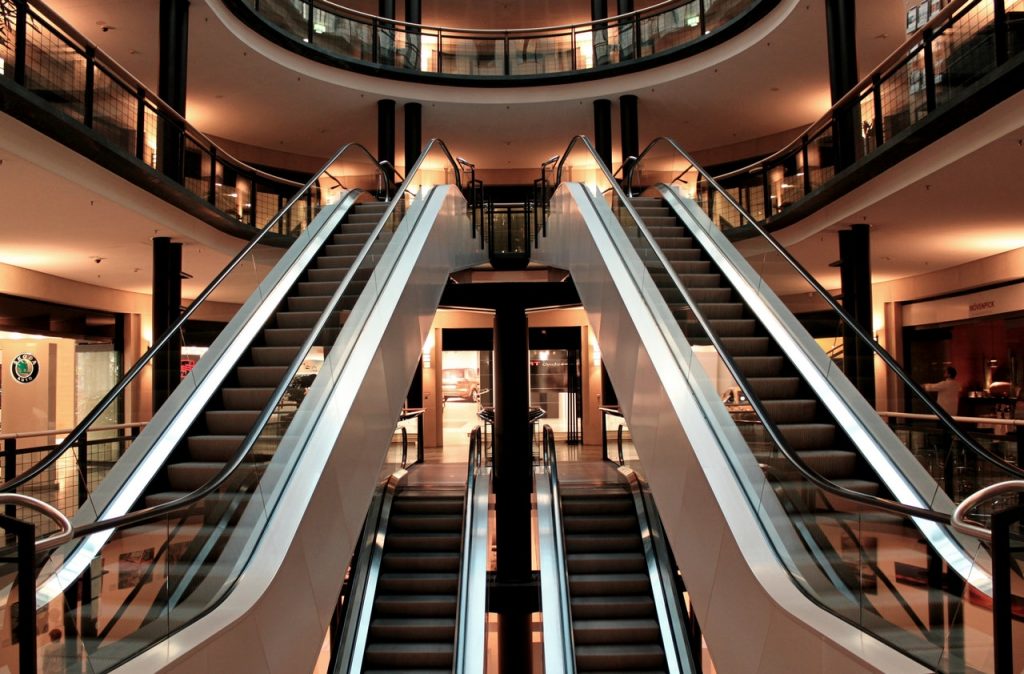
Accent Lighting for Shopping Malls
The accent lighting is to illuminate the main commodities or main places in order to highlight the commodities and stimulate customers’ desire to buy. The illuminance should depend on the type, shape, size and display method of the product. At the same time, it must have a good illuminance that is balanced with the general lighting in the mall. When choosing the light source and lighting method, the three-dimensional effect, gloss and color of the product cannot be ignored.
The main points of accent lighting are:
(1) The ratio of illuminance to general illuminance is generally 3 to 5 times. The specific value depends on the characteristics of the product type, such as gold and silver jewelry, handicrafts, and the upper limit. Generally large items, general color, and three-dimensional effect do not need to be prominently removed, such as bedding.
(2) Use high-intensity light beams to highlight the surface luster of commodities, such as ornaments, handicrafts, gold and silver jewelry, etc., use quartz lamps.
(3) Use a strong directional light beam to highlight the three-dimensional and texture of the goods. The multi-purpose 84 light tubes, energy-saving lamps, quartz lamps, and some metal halide lamps on the containers (shelf) are also used.
(4) Use light colors to highlight specific parts or products with unique colors, such as the meat and fresh fruits in the supermarket mentioned above, which are irradiated with reddish light to make them more delicious. And clothing, especially children, teenagers and women’s clothing, irradiated with the same light color, will enhance its color and vividness.
(5) Some major places in shopping malls need to create a certain atmosphere, or use the lamps themselves, or the coordinated combination of lamp arrangement and interior decoration, so that these places can produce vibrant and warm ideal light. Or it can cause a good lighting effect on the goods, or cause a certain atmosphere effect in the room.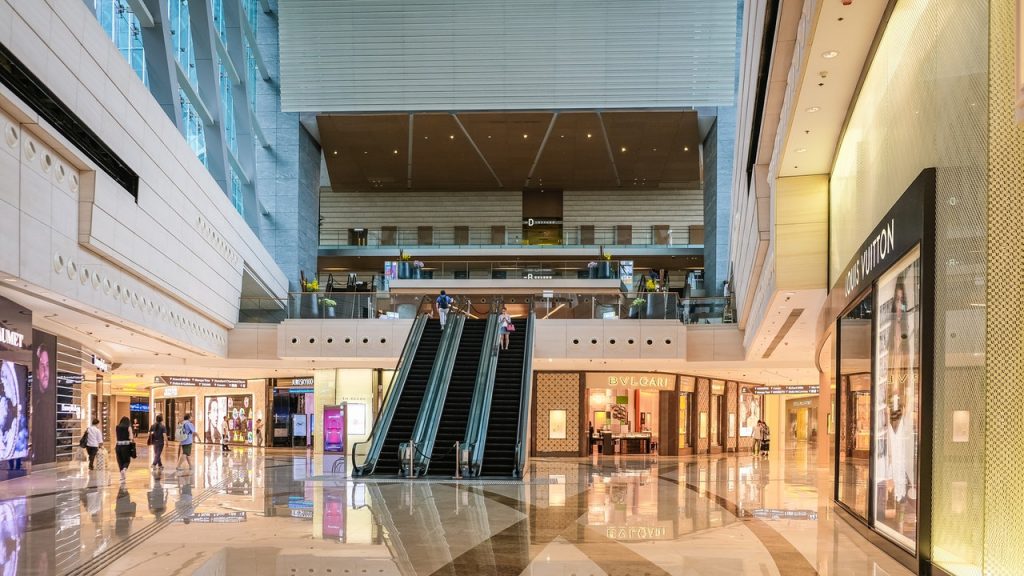
Special Purpose Lighting for Shopping Malls
(1) Evacuation lighting
In addition to the special evacuation lighting provided in the special evacuation passages, evacuation stairs, fire front rooms, etc., the general evacuation lighting of shopping malls is also used as general lighting or guard lighting. The illuminance is 0.5LX according to the national standard, but higher (such as 2LX) is more suitable. One reason is that shopping malls are highly crowded. The second reason is that customers are completely unfamiliar with the evacuation route of the mall. The third reason is that in the event of a disaster, the exhibits are more likely to fall and cause malfunctions than other places. Downlights with incandescent bulbs are often used.
(2) Illumination of evacuation signs
Evacuation sign lights and exit sign lights: People standing at any position in the mall can see at least one (except for pillars).
The lamps should be arranged along the evacuation route or at a high position at the exit. For example, it is set at 2-2.5m in the “Emergency Lighting Design Guide” to avoid the shelter of high shelves.
(3) Safety lighting
Emergency lights with accumulators are installed at the cashier, valuable commodities and necessary parts. After the main lighting is off, it can be turned on in less than 0.5 seconds.
(4) Guard lighting:
After the shopping mall is cleared for business, in order to ensure safety, guard lighting should be installed, and the guard lighting is mostly used with evacuation lighting.
Commercial Building Facade Lighting Design
1 The relationship between lighting design and commercial buildings
1.1 Lighting design enhances the commercial value of commercial buildings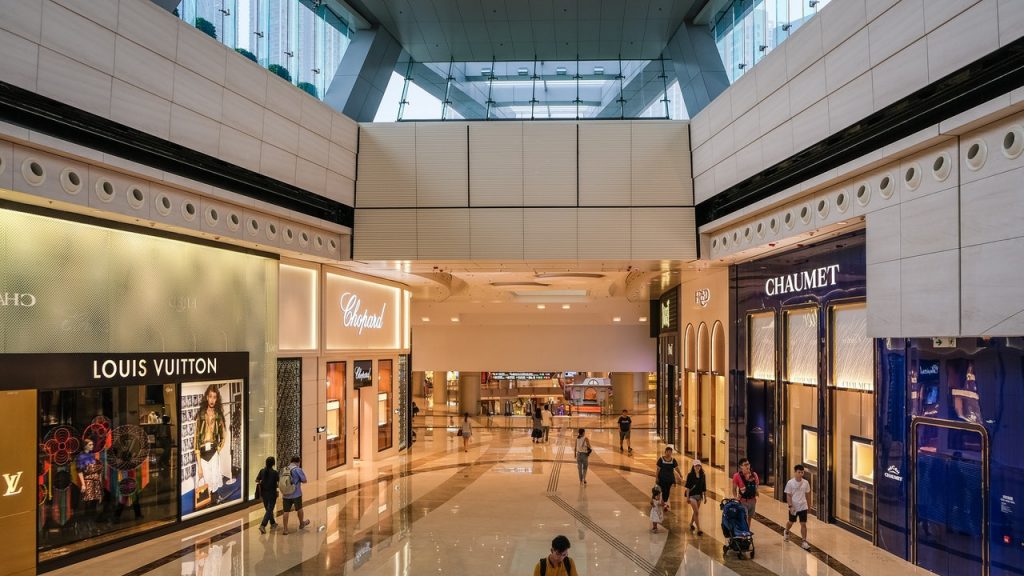
In today’s increasingly fierce commercial competition, commercial lighting design is increasingly valued by businesses. Commercial lighting design is different from other lighting designs, and is mainly carried out around commercial interests. The purpose is to create an environment with suitable illumination, high quality, and pleasant feeling, so as to attract people to consume. This is the psychological part that lighting design acts on people. Lighting design acts on architecture, environment, and commodities. It can fully demonstrate the characteristics of commodities, enhance the sense of added value of commodities, and arouse people’s desire to buy. The lighting design visually promotes commercial value, strives to maximize commerce, and enhances the image of commercial buildings.
1.2 The lighting design reflects the night image of commercial buildings
At night, the outline of most buildings is shielded, and commercial buildings attract people’s attention through the focusing effect of lights. While the light outlines the outline of the building, the color, brightness, and frequency can be changed, creating a dynamic effect, giving the building a sense of movement and passion. Compared with the daytime effect, the unique commercial lighting design can greatly improve the facade quality of commercial buildings, enrich the facade effects, and even make commercial buildings become landmark buildings, attracting people to enter commercial buildings for consumption.
1.3 Lighting design creates a variety of indoor spaces in commercial buildings
Commercial buildings are usually large in scale and complex in building functions. Targeted special lighting design for different indoor spaces in the building can guide people entering commercial buildings and identify the space, and can highlight commercial products and arouse consumers’ desire to buy.
2 Contents of commercial building lighting design
2.1 Commercial facade lighting design
The facades and halls of commercial buildings are the key lighting parts, and their illuminance values usually range from 80LX to 150LX; some commercial buildings even exceed the lighting standards for the purpose of being easy to identify, attracting attention, and impressing passersby.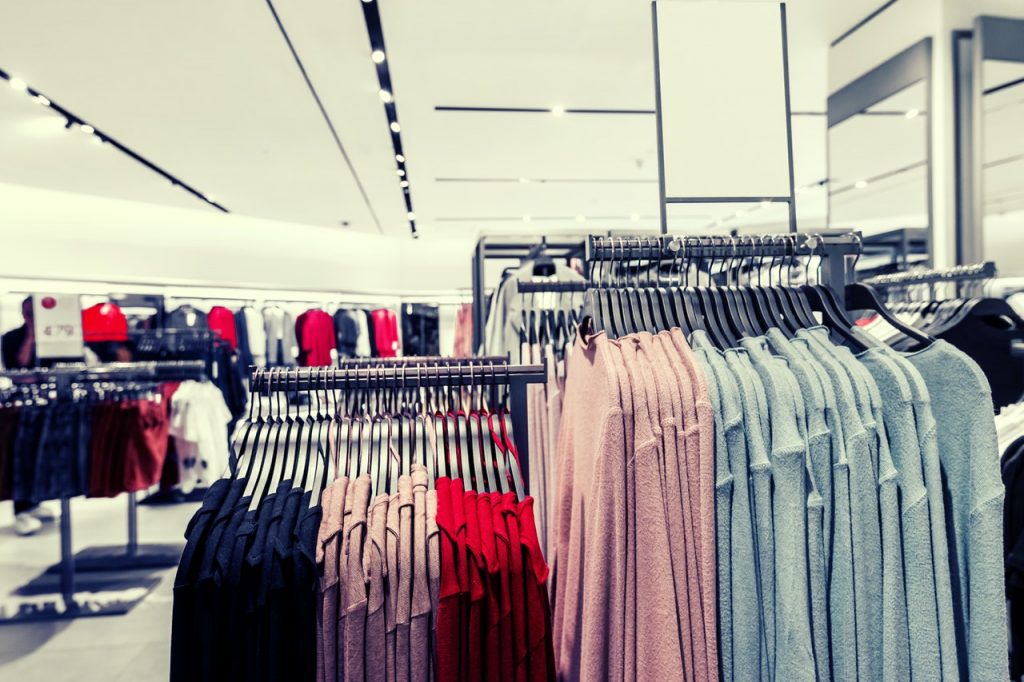
2.2 Commercial building billboard lighting design
Commercial billboards are an important part of the characteristics of commercial buildings, and the illuminance value range is usually 300LX~400LX. Commercial billboards play a role in promoting commercial value from the visual aspect, and achieve the purpose of highlighting product names, trademarks, and shapes.
2.3 Commercial building window lighting design
The window is the finishing touch to the facade of a commercial building, and its illuminance value range is usually 200LX~300LX. The bright external window lighting can often arouse the interest and attention of consumers outside the window, attract passers-by to stop and watch, thereby generating the desire to enter the mall for shopping.
2.4 Indoor lighting design of commercial buildings
The successful design of building facade lighting, advertising lighting, and window lighting can attract customers into the mall, while high-quality interior lighting design can provide customers with a comfortable shopping space and attract customers to participate in a series of commercial activities.
3 Principles of Commercial Building Lighting Design
3.1 The facade lighting design of commercial buildings should reflect the integrity and artistry
First of all, the lighting design of commercial buildings should be coordinated with the surrounding environment, coordinated with the style of the building, and have a strong integrity. Secondly, in addition to fully understanding the concept of architectural design, it is necessary to use the uniqueness of light and shadow to give commercial buildings an artistic design language.
3.2 The design should be based on different lighting design schemes
The indoor space of a commercial building usually consists of public transportation space, atrium space, specialty stores, department stores, dining and entertainment spaces. The diversity of architectural functions puts forward higher requirements for lighting design.
1) The lighting of public transportation spaces has a certain degree of guidance, usually
The form of light strips is used as a guide. At the same time, public transportation spaces are usually designed with luminous signage systems to accurately lead guests to where they want to go.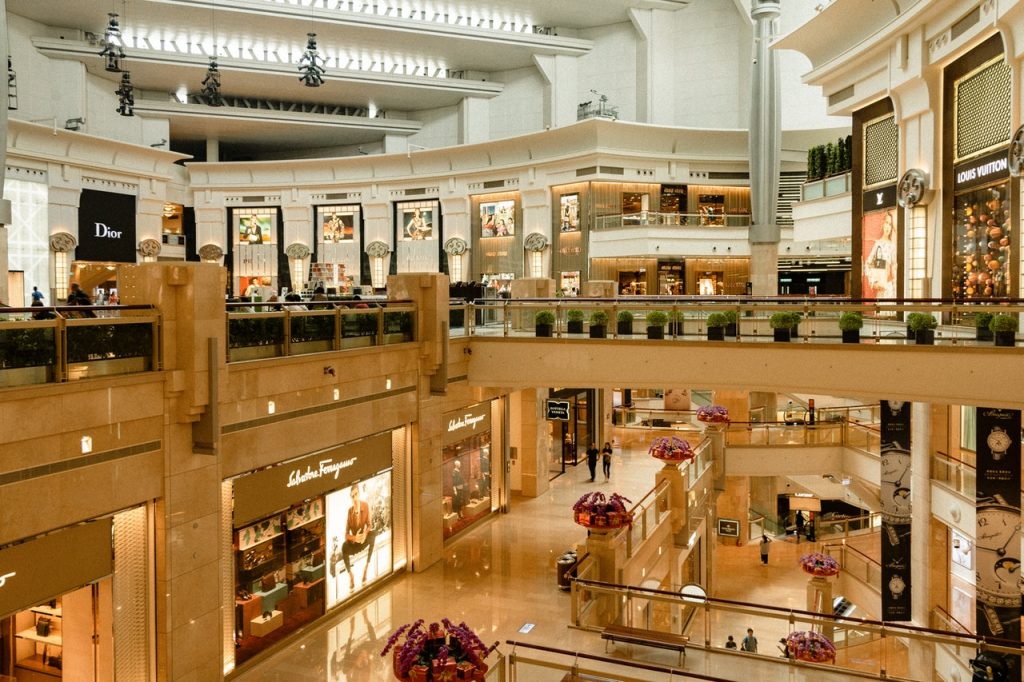
2)_ The atrium space introduces natural light during the day to become a breathtaking place for customers
place. As night falls, the high-ceiling lamps in the atrium provide night-time lighting for customers shopping at night. The atrium usually holds exhibitions and various publicity activities. The lighting format is flexible and changeable, and it is required to be equipped with a possible light source socket.
3) Specialty stores have higher requirements for lighting quality such as contrast and color rendering.
Surface light is usually used to form basic lighting, and downlights and spotlights are used for accent lighting to highlight the characteristics of products and attract customers.
4) Department store lighting is mainly functional lighting, supplemented by advertising light boxes.
Promote key products. The modular lighting arrangement creates a brisk, bright, natural and relaxing shopping environment.
5) The lighting design of dining and entertainment spaces emphasizes the theme atmosphere. Apart from
In addition to high requirements for the brightness and color rendering of the light source, the form of the lamps is often required to be consistent with the theme of the dining and entertainment space. Chandeliers are usually hung above the dining table, supplemented by spotlights for accent lighting.
3.3 Principles of economic and energy saving
On the premise of satisfying the illuminance and artistic effects, the number of lamps should be reduced as much as possible. In addition to choosing a light source with high luminous efficiency and long life, the lighting control method should also be adjusted according to the illumination requirements of different time periods to keep the equipment installation and operating costs low and achieve the purpose of energy saving.
3.4 Principles of Security
In the case that the normal lighting system no longer provides normal lighting due to a power failure, emergency lighting provides lighting for evacuation, safety, or continued work.

